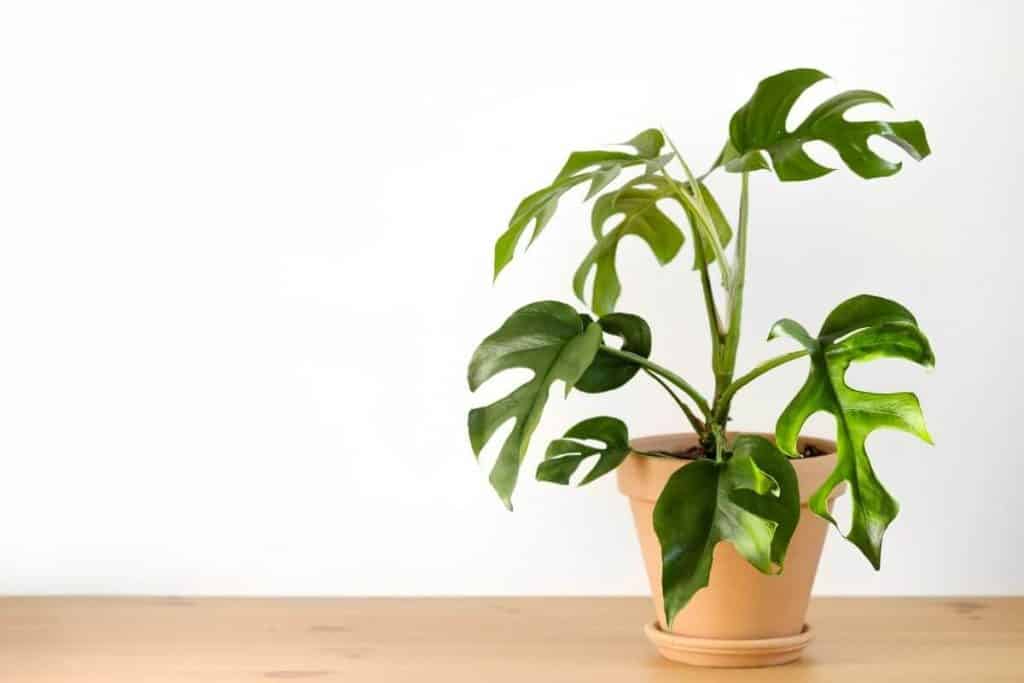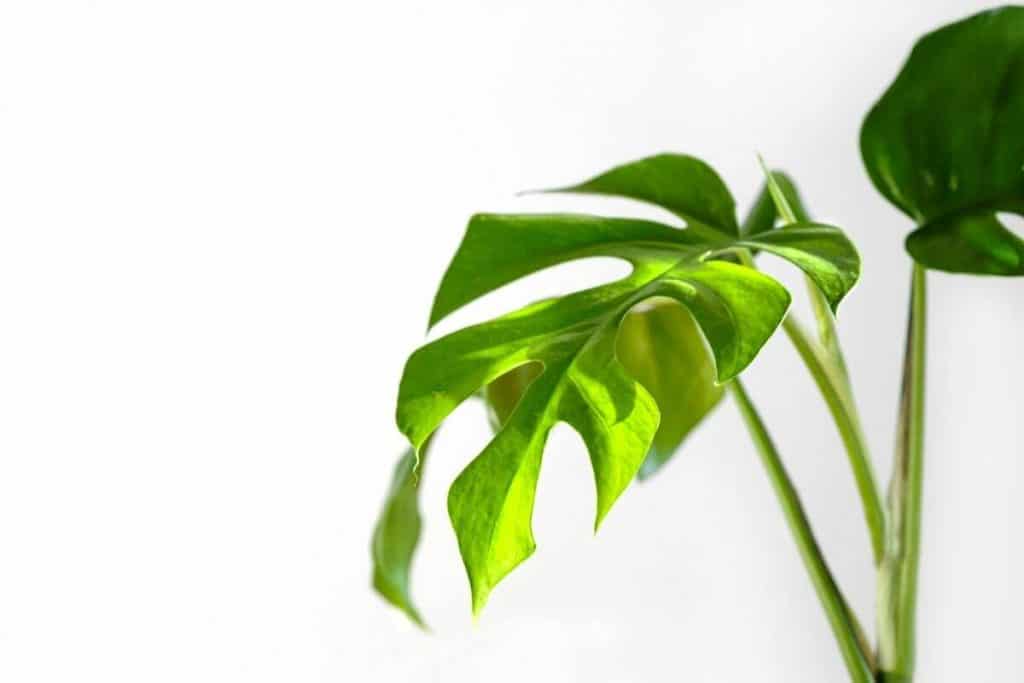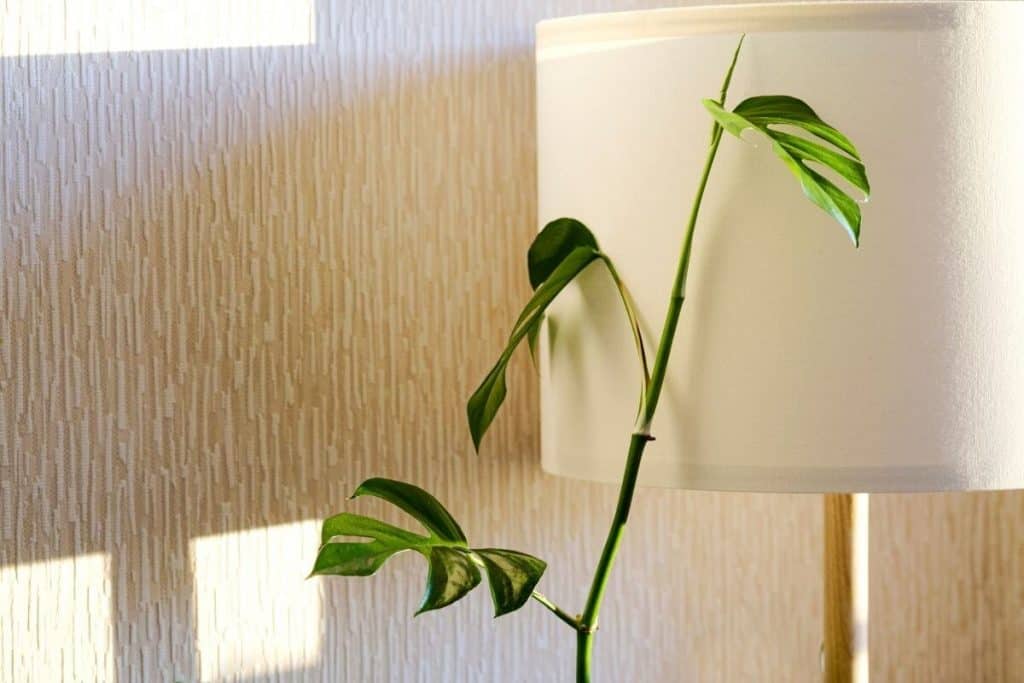Being around nature and houseplants can help to ease off our stress levels and promote relaxation and recovery, not the least, the attractive Monstera Minima.
Originally from Southern Thailand and Malaysia, and also known as Rhaphidophora tetrasperma, Monstera Minima is a houseplant from Rhaphidophora and the Araceae family. Its smallish nature earned it the nickname "Dwarf Monstera."
It is also known in some regions as Monstera Ginny and Mini Monstera. The plant can be grown as a vining plant or up a supporting frame.
Although it's a fast grower, unlike other Monsteras, it won't occupy much space. It's a low and easy maintenance plant but can show signs of wearing if not properly cared for. Check out the best care tips below;
Table of Contents
Monstera Minima Care and Growing Tips

Below is how to grow and care for the monstera minima plant, even if you've never owned one below:
Natural Habitat
The natural habitat or environment for the Monstera Minima plant is undercover of lush, tropical rainforests in Southeast Asia.
Due to the warm and humid environment in the plant dwells, it is instigated to grow rapidly. The creeping vines can grow on the forest floor or up tree trunks.
The Monstera minima can grow up to 12 ft. (3.6 m) high in its natural habitat. When you make it an indoor tropical potted houseplant, the Minima will grow at a height around 4 or 5 ft. (1.2 to 1.5 m) tall.
Being a popular houseplant from the tropics, you can grow the Monstera Minima (split-leaved plant) outdoors if you live in USDA zones 10 through 12. The plant cannot tolerate cold, and its minimum temperature is 55°Fahrenheit (12°C).
Recommended Reading: Pearls and Jade Pothos Care
Light Requirements
Just like most other Monstera varieties, the Monstera Minima variety will grow best in indirect sunlight, which is exactly what it would receive on the rainforest floor under the tree canopy.
Keep your Monstera Minima close to a bright window where it will receive enough indirect sunlight for most of the day.
It can also tolerate a little bit of direct morning sun but do not leave it in an area where the hot midday or afternoon sun will heat directly on the leaves to avoid ending up with several damaged or burned leaves.
The best location should be an east-facing window, but a south- or west-facing window will probably make sense if you drag it a few feet back from the direct sunlight position or use sheer curtains to filter the light.
Ensure you keep an eye on its light conditions throughout the year because the sunlight's positioning can change over the seasons, except you live exactly on the equator.
In other words, the ideal spot in the summer might become disastrous during the winter when the sun shines at a different angle.
If your area is deprived of adequate natural sunlight, then a supplement is recommended. A grow light will do the trick.
Therefore, Monstera Minima doesn't thrive in lower light conditions and will become more prone to yellowing and even root rot; hence, light is crucial for keeping these plants healthy.
Watering Requirements
If you want to maintain a healthy and attractive Monstera Minima, you must ensure the soil is moderately damp but not soggy or dried out.
Before you water, you must ensure that the top two inches or thereabouts are dry to the touch or keep an eye on the moisture meter as it reads 3-4.
Meanwhile, if your pot has a proper drainage system and your plant receives enough light, this should be every 7-10 days.
We would advise you to use a moisture meter, as it will provide you with the perfect idea of what's happening inside your plant's root ball.
Again, it's possible for the top few inches to feel dry while the root ball is still very much wet, particularly when your pot lacks drainage or isn't draining properly, or also if your soil is too compressed.
Going by those mentioned above, a moisture meter will give you information about when to water and help you monitor your drainage quality.
However, if the time is right to water, you can gradually add water to the soil until you see it draining from the bottom of the pot. Allow it to drain in the sink or tub for a few hours or empty the drainage tray right away.
Humidity and Temperature

Monstera Minima does best in relative humidity of about 50 to 60 percent. Just like other Monstera varieties, the right humidity contributes to the rapid growth of the Monstera Minima.
On the other hand, it is a tropical plant, and therefore, not only will it adapt, but it will also grow well in lower humidity.
To know if the air is too dry, check for the large lobed leaves to see if it has started to curl.
However, you mustn't make a tropical or humid jungle out of your room, as you can afford it the best condition it requires by putting it on a pebble tray with water, as it will help to increase air moisture around the plant. You can also use a room humidifier to boost humidity.
People can also ask, should you mist a Monstera Minima leaves? Misting is a perfect way to add moisture to the leaves.
If you wipe them with a damp cloth, you'll also keep the shiny, leathery leaves away from dirt. However, misting Monstera leaves is not a lasting solution to solve its humidity needs.
Temperature-wise, the ideal temperature for growing Monstera Minima ranges from 68°F to 80°F (16°C to 27°C). In other words, native to warm, tropical forests, the Monstera Minima does not thrive in the cold.
The best option is to keep the plant away from drafts or heating vents. The minimum temperature of Monstera Minima is 55°F (12°C).
Monstera Minima thrives outdoors in USDA zones 10 through 12. Therefore, if you bring them out during the summer, endeavor to keep them in an area they can get enough indirect sunlight and where there's enough air circulation.
Then, please don't fail to bring them inside when temperatures drop to 55°F (12°C) or below.
Recommended Reading: Monstera Obliqua Care and Growing Tips
Monstera Minima Soil Requirements
Just like most other Monsteras, like the Variegata, the Monstera Minima can tolerate almost any soil. However, it is best to use 2 to 3 parts of good potting soil mixed with 1 part perlite. You can also choose to mix in some orchid bark.
Again, you can do equal parts soil, perlite, and bark mix. The best option we recommend should be the coco fiber or similar orchid bark but a more sustainable alternative to peat moss.
Although this is a great mixture, it tends to dry out quicker, but it is the best mixture for your plants.
There is no magic mix. In as much as you have well-drained soil and sufficient air to the roots (additives like perlite and orchid bark accomplish that), it is okay.
If you want your Monstera Minima steadily healthy, it's necessary to refresh the potting soil every other year, as it allows you to replenish nutrients in the soil and check for signs of root rot.
Monstera Minima Fertilizing
As it is with other Monstera varieties and indoor plants, fertilizing is important for the Monstera Minima.
Still, the problem is that most people tend to overfeed them, believing it is best for growth. That notion is wrong, as over-fertilizing Monstera can cause problems.
These plants grow fairly quickly; hence, they desire a steady supply of nutrients to support healthy growth, strong roots, sturdy stems, and beautiful green leaves. Meanwhile, a healthy
Monstera Minima can easily burn through virtually every nutrient in its potting soil within only a few months.
Therefore, it's advisable to commence with the fertilizing routine some 30days or thereabout after getting your plant. And the ideal fertilizer for usage should be a mild liquid fertilizer with an NPK ratio close to 5-2-3.
We also highly recommend the Monstera Plant Food fertilizer, as it's perfect for Monsteras and Aroids as a whole, and it's best to use with each watering; hence, saving you the stress of having to remember a fertilization schedule.
So, your plant is more likely to receive the ideal amount of nutrients rather than running the risk of mistakenly being over-or under-fertilized when you get off schedule.
These plants tend to grow most during the spring and summer, so you may want to fertilize with each watering (if you're using Monstera Plant Food) or a few times a month with another fertilizer.
Do not fail to adhere to the guidelines to ensure that you are feeding your plant with the required amount of fertilizer. During the fall and winter, you can cut back to fertilizing half to a third as much.
A regular Monstera plant should be fertilized almost often in the spring and summer months (about monthly); therefore, the Mini Monstera can be fertilized about half of that. During the winter season, you can fertilize them once every two months and fertilize even less.
Meanwhile, we recommend liquid fertilizer as the best for this exercise. If your area lacks enough sunlight during the winter periods, avoid feeding them too often, as it won't be helpful in their growth in any way; hence, they need adequate sunlight.
Also, Overfeeding can make a salt buildup around the plant's roots and stop it from soaking up water as efficiently as it normally does.
Therefore, ensure your plant receives a complete shower and soil rinse every few months anyway because it will help eradicate any salt/mineral buildup.
A liquid Miracle Grow indoor plant fertilizer diluted with water is highly recommended. There are many varieties, but as we said earlier, the aforementioned liquid fertilizer is the easiest to use. Therefore, it is best to follow that path.
Planting (Potting & Repotting) Monstera Minima

The Monstera Minima can grow very rapidly; therefore, you must always be ready to carry out some occasional repotting.
The perfect season for repotting this variety is during the early spring, when the plant is going through a period of active growth ahead.
When you discover that roots are circling the bottom of the nursery pot, it signifies that your plant needs repotting. Therefore, you have to increase the pot size by just a few centimeters at this level without drastic jumps.
Monstera Minima Pruning Needs
Careful pruning can help the Monstera Minima to maintain its colors. The goal is to strike a balance between the ornamental white patches and the necessary-to-life green patches.
However, Minima doesn't appreciate being pruned when their stems get particularly long.
If you discover a lot of white leaves in your plant, trim a few centimeters below a leaf node that ideally has an aerial root underneath it.
On the other hand, if there are many green leaves and your lightning seems adequate, then there is a need to trim some green ones using sterilized pruning shears. Note that, just like every other Monstera variety, the Minima doesn't require regular pruning.
How to Propagate Monstera Minima
Like some Monstera varieties, the best and easiest way a Monstera Minima can be propagated is through the stem. You'll discover tiny brown roots sprouting from the nodes on the stems. They are the aerial roots used for anchoring their stems to other plants when growing in nature.
If you want to propagate by stem cuttings, you've to prune a stem right beneath a node and aerial root. Ensure that your pruning tools are clean and sharp. The cuttings can then easily be dipped in water or a light mix to continuous root.
You can also propagate the Minima variety in water in a clear container because, by so doing, you can easily notice the progress the roots are undergoing.
Monstera Minima Pests Control
The Monstera Minima is prone to several pests that could threaten and be disastrous to its healthy growth. Therefore, it is necessary to keep a close eye on them to avoid the ravaging effects of pests, especially mealy bugs, scale, and spider mites.
Also, any action you are planning to take should be very fast because these pests multiply incessantly.
They also move freely, as they can quickly transfer from one plant to another. So, whatever you plan to do should be done fast before it will result in infestations.
Meanwhile, like other Monstera varieties and houseplants in the Araceae family, the Rhaphidophora tetrasperma (Monstera Minima) is considered toxic or poisonous to pets.
Hence, it would be best always to keep them a little distance from your pet and even kids.




